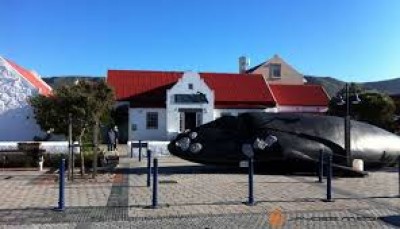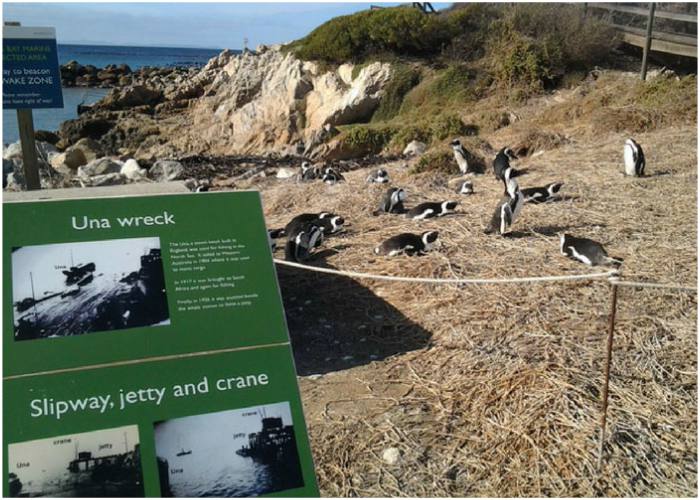6 Iconic museums that depict the colorful lives on the Cape Whale Coast in the times of shipwrecks and whaling.
- Monday, 17 July 2017
- Author: linda
- Page Views: 21950

A very different sort of classroom…
The winter holiday is the ideal time to show your kids that they can learn a lot outside of school – and, what’s more, that it can be fun! Make the most of your trip to the whale coast of Southern Africa and explore one of the museums where the history will come alive in the artifacts on display.

The Old Harbour Museum (Hermanus)
This is one of few fishing harbors in the world that has been conserved intact. It harbors a few historic fishing boats along the slopes and re-established coastal fynbos along the cliffs. It is situated right on the edge where the land meets the sea, in the heart of Hermanus. The town originally developed around this harbor from around the middle of the nineteenth century when plentiful fish and fresh water was found in the area.
The indoor area houses approximately 2,700 exhibitions portraying the contrast of the history of fishing since 1855 by the poor local fishermen versus angling by the wealthy holiday makers, taking place at the same harbor.

The Whale House (Hermanus)
By the early 1990s, the southern right whales who visited the area bay from June to December became a chosen tourist attraction in Hermanus. A whale museum was needed to inform and educate the many local visitors as well as national and international tourists. The museum is entirely dedicated to whale exhibits, especially the southern right whale, and anything pertaining to cetaceans.
A young female Southern Right whale, that had died at sea, washed up on the rocks at Onrus River, just to the west of Hermanus. She was exactly the right size for the exhibition space. For three and a half years her bones were cleaned, prepared and assembled and are now hanging in the Whale House. The research and collecting of artifacts and information took years but the result is a world-class exhibition on cetaceans.

Waaygat Whaling Station- Stony Point, Betties Bay
The building and machinery were erected by The Southern Cross Whaling Company during 1912 under the supervision of a Mr. Bernstein who had experience in the whaling industry. Up to 107 whales were landed at Hangklip in the earlier months of the 1920’s.
Waaygat Whaling station was in operation until 1930 after which no more whaling took place from the site. While the layout seemed to have remained much the same over the years, some modifications were obviously made. Today the base remains of the boilers of the Blubber House, the remains of the meat house and the cutting are descriptively marked as part of the outdoor displays. Photographic murals of the whaling, as well as information about the various whales, cetaceans, and the African Penguin, is depicted in the indoor display.

Strandveld Museum ( Franskraal, Gansbaai)
The Strandveld Museum is a little gem that dates back to 1860 and is housed in the original home of one of the Headmen that used to work on Dyer Island. The museum has the largest collection of relics of the HMT Birkenhead, that wrecked off Danger Point houses a variety of local artefacts including the largest privately owned collection of relics from the HMS Birkenhead which sunk at Danger Point near Gansbaai in 1845as well as several other historical items pertaining to the area The displays include historic photos of Gansbaai and surrounding areas, fishing and farming equipment and interesting Strandveld memorabilia. The owners by Jan and Estie Fourie are local historians and marvelous story tellers who gladly take you on a trip through time.

Shipwreck Museum ( Bredasdorp)
A maritime museum with the primary theme of "Shipwrecks along the dangerous Southern Cape coast and their influence on the development of the Strandveld". The Agulhas coastline forms part of the notorious Cape of Storms and the tragic but colorful history of its shipwrecks is dramatically evoked in the displays at the Shipwreck Museum. The museum is housed in a historical building in the center of town. A series of scale models demonstrates the death throes of a ship until its final disintegration when it is buried by sand. The bulk of the exhibits are the artifacts and remains from four of the area's biggest wrecks, notably the Nicobar, Arniston, the Birkenhead, the Queen of the Thames and the Oriental Pioneer.

Cape Agulhas Lighthouse ( Struisbaai)
Another aspect of the Shipwreck Museum is the Cape Agulhas Lighthouse, 40km away. By the time the lighthouse became operational in 1849, it was long overdue, as many ships rounding Africa's southernmost tip had already come to grief. The Cape Agulhas Lighthouse is situated at Cape Agulhas, the southernmost tip of Africa. It was the third lighthouse to be built in South Africa, and the second-oldest still operating, after Green Point. The unique design is based on the Pharos of Alexandria, one of the Seven Wonders of the Ancient World.
On display is the first lamp that was used to produce a beam of 4 500 candle power and which was fuelled by oil obtained from the tails of local fat-tailed sheep. A rotating optical system was used from 1914 and an electric light of 12 million candlepower was introduced in 1936. Inside the lighthouse museum are artifacts and the history of and the development of the lighthouses along the coast. The top section of the tower can be reached via the narrow staircase from where the 360-degree view is spectacular!
Call us and schedule your listing today! Contact Us
Quick Menu
Bottom Menu
Office Locations
Hermanus Office
25 Mitchell Street, Checkers Building, Hermanus, South Africa
Phone: +27 (0) 28 312 3846
Email: CLICK HERE
Online Marketing Team
Jaydee Media
Phone: +27 (0) 28 312 3846
Email: CLICK HERE
Copyright © 2025 Hermanus Online Magazine. Web Development by Jaydee media.
